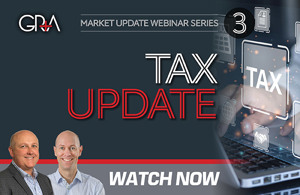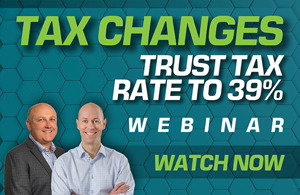
In January, GRA’s Professional Trustee team wrote a blog on the new requirements trusts must meet when filing their tax returns. In this article, I go into a little more detail about the financial information that must be disclosed to the IRD.
But first, why have these new rules been introduced at all?
The main reason is because of the new 39% individual tax rate for income over $180,000, which came into effect from April 1, 2021. Previously, the top tax rate for individuals was the same as trusts, at 33%.
Consequently, the IRD has some concerns that taxpayers in the highest income bracket will be pushing income through their trusts to reduce the amount of tax they have to pay. Measures have already been introduced to prevent people from avoiding the higher tax rate by using companies. Now IRD will be closely monitoring trusts to see if they need to introduce similar measures.
At GRA we have always said we were surprised (but pleased) that the top trust rate did not change to be in line with the individual rate – if it had, perhaps the new hoops trusts need to jump through could have been avoided (or at least reduced). In saying that, the information trustees need to provide is not particularly onerous; it’s just more time-consuming than we have all been used to.
What financial information must trusts provide to IRD?
Trusts must provide the IRD with profit and loss statements and statements of financial position. To do this, they must prepare financial statements that meet certain standards, as defined by a March 2022 Tax Administration Order.
Although the full financial statements do not need to be disclosed to IRD (unless requested), they still have to meet minimum requirements. The financial statements must:
- Consist of both a profit and loss statement and a statement of financial position
- Be prepared using the double-entry method
- Use approved valuation methods for assets and liabilities
These minimum requirements are suitable for simplified trusts, which are defined as trusts where:
- Assessable income is less than $100,000
- Deductible expenditure is less than $100,000
- Total assets of the trust are less than $5 million
If the trust is bigger (i.e. income, expenditure and assets are greater than defined above), further requirements apply in addition to the minimum requirements stated above. Among other things, financial statements for bigger trusts must:
- Use the principles of accrual accounting
- Contain a statement of accounting policies
- Disclose comparable figures for the previous income year (but only if trustees have this information)
- Show a reconciliation of the profit and loss statement
- Include a schedule of the trust’s fixed assets and depreciable property
- Show any associated person transactions
Exceptions
The most notable exception to the new rules is for non-active trusts, which are trusts that derive no income and have no deductions. (Typically they just own the family home.) Non-active trusts do not have to provide financial statements, and nor do they need to comply with the other disclosure rules (such as providing details of settlors and beneficiaries to IRD, as explained in GRA’s previous blog). To qualify, the trust must have a non-active declaration filed with IRD.
There are other exemptions to these new disclosure rules, including charitable trusts, but they have their own separate disclosure requirements.
Summary
While having to prepare financial statements for your trust may seem like a lot of work, your accountant will be able to make this process relatively easy for you. And even though these new rules mean trustees have to do more, at GRA we believe that in most instances, the benefits of a trust still far outweigh the inconvenience and cost of preparing the information the IRD requires. In addition, using a professional trustee (rather than using an independent person) can make all of this much easier.
For assistance with preparing your trust’s financial statements and tax returns, contact us at GRA – we will be very pleased to help you.

Anthony Strevens
Partner
Did you like this article? Subscribe to our newsletter to receive tips, updates and useful information to help you protect your assets and grow your net worth. We're expert accountants providing expert advice to clients in NZ and around the world.
Disclaimer: This article is intended to provide only a summary of the issues associated with the topics covered. It does not purport to be comprehensive nor to provide specific advice. No person should act in reliance on any statement contained within this article without first obtaining specific professional advice. If you require any further information or advice on any matter covered within this article, please contact the author.
Comments
Testimonials
Property School gave me increased awareness of opportunities and pitfalls, insight into ways to move forward, confidence in the advice given - and the need to ask advice! I really enjoyed the down to earth approach and open-ness of methodology and many possible approaches brought together in the program. - Sue, November 2018
Property 101by Matthew Gilligan
Investing in residential property?
Put this at the top of your reading list.
If you're investing in residential property, seeking to maximise your ability to succeed and minimise risk, then this is a 'must read'.
Matthew Gilligan provides a fresh look at residential property investment from an experienced investor’s viewpoint. Written in easy to understand language and including many case studies, Matthew explains the ins and outs of successful property investment.
- How to find the right property
- How to negotiate successfully
- Renovation do's & don'ts
- Property management
- Case studies and examples
- and much, much more...







































